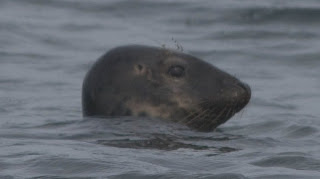Anguis fragilis
Anguis fragilis
Taking a short (and much needed?) break from blogging recent avifauna spp. sightings, it is time to include the photo record of a slow worm Anguis fragilis found under felt in the shelter-belt at Sparsholt College on 22nd September 2009 Given the size and colouration of the slow worm (iridescent gold, with black / brown sides and a central dorsal stripe), I would identify it as a juvenile. This slow worm was not the only specimen to be found. However, the first was to swift (!) to be caught when the tin was lifted. The juv. reptile showed its contempt for disturbance by defecating in the hand.
ARKive provides a brief guide to the biology of this reptile, along with some stunning video footage of the sp. http://www.arkive.org/slow-worm/anguis-fragilis/biology.html Although any information the website provides regarding the slow worms legal status needs to be double-checked against both Natural England and UK Biodiversity Action Plan websites.
The slow worm is protected under Schedule 9 Wildlife and Countryside Act (1981).








+Peerie+water+Rousay-754416.jpg)
+Peerie+water+Rousay-755906.jpg)


.jpg)
+Rousay.jpg)









